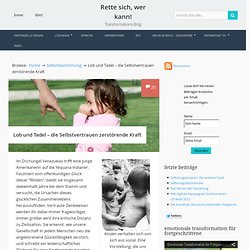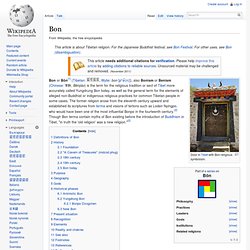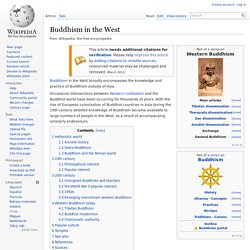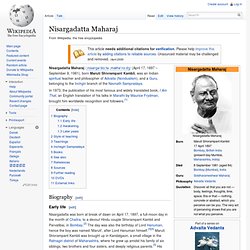

History/Myths/Religion. Lob und Tadel – die Selbstvertrauen zerstörende Kraft. Kinder verhalten sich von sich aus sozial.

Eine Vorstellung, die uns fremd ist. Durch Erziehung wird das natürliche Sozialverhalten untergraben. Im Dschungel Venezuelas trifft eine junge Amerikanerin auf die Yequana-Indianer. Fasziniert vom offenkundigen Glück dieser “Wilden”, bleibt sie insgesamt zweieinhalb Jahre bei dem Stamm und versucht, die Ursachen dieses glücklichen Zusammenlebens herauszufinden. Vertraute Denkweisen werden ihr dabei immer fragwürdiger, immer größer wird ihre kritische Distanz zu Zivilisation. Sie erkennt, wie unsere Gesellschaft in jedem Menschen neu die angeborenene Glücksfähigkeit zerstört, und schreibt ein leidenschaftliches Plädoyer für eine Kindererziehung ohne Zivilisationsneurosen. Jean Liedloff schreibt viel über die das Selbstvertrauen zerstörende Kraft von Lob und Tadel. Ich war Zeuge der ersten Augenblicke im Arbeitsleben eines kleinen Mädchens.
Fürsorge wird, ebenso wie Unterstützung, nur auf Verlangen gewährt. “Oh, was für ein liebes Mädchen!” Buddhism Archive. Samsara Official Trailer #2 (2012) International Movie HD. BuddhaQuote. By Your Grace ~ Jai Gurudev. Conglomeration of Interesting Sites. Obama's Theologian: David Brooks and E.J. Dionne on Reinhold Niebuhr and the American Present [Speaking of Faith® from American Public Media] Lojong. Lojong (Tib.

བློ་སྦྱོང་,Wylie: blo sbyong) is a mind training practice in the Tibetan Buddhist tradition based on a set of aphorisms formulated in Tibet in the 12th century by Geshe Chekhawa. The practice involves refining and purifying one's motivations and attitudes. The fifty-nine or so slogans that form the root text of the mind training practice are designed as a set of antidotes to undesired mental habits that cause suffering. They contain both methods to expand one's viewpoint towards absolute bodhicitta, such as "Find the consciousness you had before you were born" and "Treat everything you perceive as a dream", and methods for relating to the world in a more constructive way with relative bodhicitta, such as "Be grateful to everyone" and "When everything goes wrong, treat disaster as a way to wake up.
" History of the practice[edit] Atiśa journeyed to Sumatra and studied with Dharmarakṣita for twelve years. Geshe Chekhawa is claimed to have cured leprosy with mind training. 1. Meister Eckhart. Bön. Door in Tibet with Bon religious symbolism.

Definitions of Bon[edit] The scholarly history of Bon is difficult to clearly ascertain because the earliest surviving documents referring to the religion come from the 9th and 10th centuries, well after Buddhists began the suppression of indigenous beliefs and practices.[3] Moreover, historian Per Kværne[3] notes that "Bon" is used to describe three distinct traditions: Buddhism in the West. Buddhism in the West broadly encompasses the knowledge and practice of Buddhism outside of Asia.

Occasional intersections between Western civilization and the Buddhist world have been occurring for thousands of years. With the rise of European colonization of Buddhist countries in Asia during the 19th century detailed knowledge of Buddhism became available to large numbers of people in the West, as a result of accompanying scholarly endeavours. Hellenistic world[edit] Ancient history[edit] Gospel of Thomas. The Coptic-Language text, the second of seven contained in what modern-day scholars have designated as Codex II, is composed of 114 sayings attributed to Jesus.[2] Almost half of these sayings resemble those found in the Canonical Gospels, while it is speculated that the other sayings were added from Gnostic tradition.[3] Its place of origin may have been Syria, where Thomasine traditions were strong.[4] The introduction states: "These are the hidden words that the living Jesus spoke and Didymos Judas Thomas wrote them down.
"[5] Didymus (Greek) and Thomas (Aramaic) both mean "twin". Some critical scholars suspect that this reference to the Apostle Thomas is false, and that therefore the true author is unknown.[6] The Gospel of Thomas is very different in tone and structure from other New Testament apocrypha and the four Canonical Gospels. U.G. Krishnamurti. J. Krishnamurti Online, the official repository of the authentic teachings of J. Krishnamurti.
Jiddu Krishnamurti. He claimed allegiance to no nationality, caste, religion, or philosophy, and spent the rest of his life travelling the world, speaking to large and small groups and individuals.

He wrote many books, among them The First and Last Freedom, The Only Revolution, and Krishnamurti's Notebook. J. Krishnamurti Online, the official repository of the authentic teachings of J. Krishnamurti. Nisargadatta Maharaj. Nisargadatta Maharaj /ˌnɪsərɡəˈdɑːtə ˌmæhəˈrɑːdʒ/ (April 17, 1897 – September 8, 1981), born Maruti Shivrampant Kambli, was an Indian spiritual teacher and philosopher of Advaita (Nondualism), and a Guru, belonging to the Inchgiri branch of the Navnath Sampradaya.

In 1973, the publication of his most famous and widely translated book, I Am That, an English translation of his talks in Marathi by Maurice Frydman, brought him worldwide recognition and followers.[1] Biography[edit] Early life[edit] In 1915, after his father died, he moved to Bombay to support his family back home, following his elder brother.
Initially he worked as a junior clerk at an office but quickly he opened a small goods store, mainly selling beedis – leaf-rolled cigarettes, and soon owned a string of eight retail shops.[6] Religion. Wisdom. Religion.